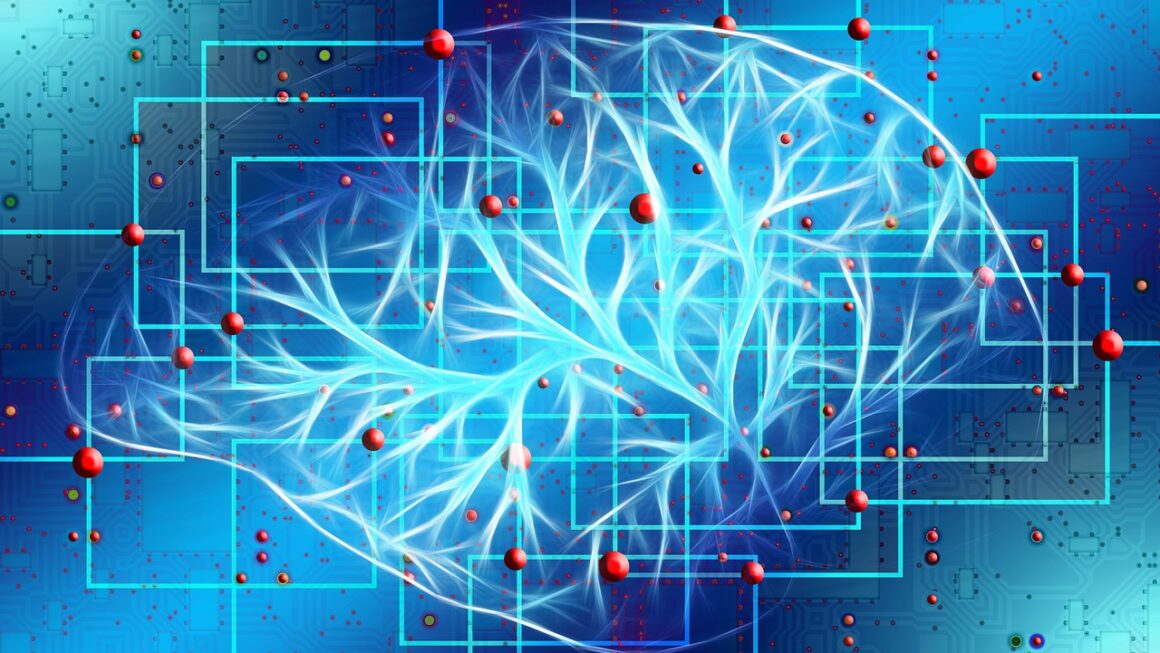The world is undergoing a seismic shift fueled by artificial intelligence (AI). From automating mundane tasks to powering groundbreaking scientific discoveries, AI innovation is rapidly transforming industries and reshaping our daily lives. Staying informed about these advancements is crucial for businesses and individuals alike to harness the immense potential of this technological revolution.
Understanding the Current Landscape of AI Innovation
Defining AI and its Core Components
At its core, Artificial Intelligence aims to create machines that can perform tasks that typically require human intelligence. This encompasses a wide range of capabilities including:
- Learning: Acquiring information and rules for using the information. Machine learning is a key subset where algorithms learn from data without explicit programming.
- Reasoning: Using rules to reach conclusions. This includes deductive, inductive, and abductive reasoning.
- Problem-solving: Developing strategies to overcome obstacles and achieve goals.
- Perception: Acquiring and interpreting sensory information (e.g., computer vision, natural language processing).
These core components are implemented using various AI techniques, including machine learning (ML), deep learning (DL), natural language processing (NLP), and computer vision (CV). Understanding these terms is critical for navigating the AI landscape.
Key Areas of AI Advancement
AI innovation is occurring across multiple fronts, with significant progress being made in:
- Natural Language Processing (NLP): Enabling computers to understand, interpret, and generate human language. Examples include chatbots, language translation services, and sentiment analysis tools.
- Computer Vision: Allowing machines to “see” and interpret images and videos. Applications include facial recognition, object detection, and medical image analysis.
- Robotics: Integrating AI with physical robots to perform complex tasks in manufacturing, healthcare, and logistics.
- Machine Learning (ML): Developing algorithms that can learn from data and improve over time without explicit programming. Examples include predictive analytics, recommendation systems, and fraud detection.
- Generative AI: Creating new content, from images and text to code and music. This is a rapidly expanding field with tools like DALL-E 2, Midjourney, and ChatGPT.
Real-World Applications of AI
AI is no longer a futuristic concept; it’s a practical tool being used in countless industries. Some examples include:
- Healthcare: AI-powered diagnostics, personalized treatment plans, drug discovery. AI can analyze medical images with greater speed and accuracy than human doctors in some cases, leading to earlier and more accurate diagnoses.
- Finance: Fraud detection, algorithmic trading, risk assessment. AI algorithms can identify suspicious transactions in real-time, preventing financial losses.
- Manufacturing: Predictive maintenance, process optimization, quality control. AI-powered sensors can detect anomalies in machinery, preventing breakdowns and improving efficiency.
- Retail: Personalized recommendations, inventory management, customer service chatbots. AI can analyze customer data to provide tailored product recommendations, increasing sales and customer satisfaction.
- Transportation: Self-driving cars, optimized logistics, traffic management. AI algorithms can process sensor data and make driving decisions in real-time, improving safety and efficiency.
Driving Forces Behind AI Innovation
Data Availability and Accessibility
The explosion of data, often referred to as “Big Data,” is a primary driver of AI innovation. Machine learning algorithms require vast amounts of data to learn effectively.
- Increased data generation: Social media, IoT devices, and online transactions generate massive amounts of data.
- Cloud computing: Provides scalable and affordable storage and processing power for large datasets.
- Open-source datasets: Publicly available datasets facilitate research and development in AI. For example, ImageNet, a large database of labeled images, has been instrumental in advancing computer vision research.
Advancements in Computing Power
AI algorithms, especially deep learning models, require significant computational resources.
- GPU acceleration: Graphics processing units (GPUs) are optimized for parallel processing, making them ideal for training deep learning models.
- Cloud-based AI platforms: Provide access to powerful computing resources on demand, enabling businesses to develop and deploy AI solutions without investing in expensive hardware.
- Specialized AI hardware: Companies are developing specialized chips optimized for AI workloads, further accelerating AI innovation. Examples include Google’s Tensor Processing Units (TPUs).
Algorithmic Breakthroughs
Continuous research and development in AI algorithms are leading to significant improvements in performance and capabilities.
- Deep learning: Neural networks with multiple layers have achieved state-of-the-art results in various tasks, including image recognition, natural language processing, and speech recognition.
- Transformer models: Revolutionized natural language processing by enabling models to process long sequences of text and capture complex relationships between words.
- Reinforcement learning: Enables agents to learn through trial and error by interacting with an environment and receiving rewards or penalties.
Ethical Considerations and Challenges
Bias and Fairness in AI
AI algorithms can perpetuate and amplify biases present in the data they are trained on.
- Data bias: If the training data is not representative of the population, the AI model may make biased predictions. For example, facial recognition systems trained primarily on images of white men have been shown to perform poorly on women and people of color.
- Algorithmic bias: The design of the AI algorithm itself can introduce bias. For example, if an algorithm is designed to prioritize certain features over others, it may discriminate against certain groups.
- Mitigation strategies: Data augmentation, fairness-aware algorithms, and diverse development teams can help mitigate bias in AI.
Transparency and Explainability
Many AI models, especially deep learning models, are “black boxes,” making it difficult to understand how they arrive at their decisions.
- Lack of transparency: Makes it difficult to identify and correct errors or biases in the model.
- Explainable AI (XAI): Aims to develop AI models that are more transparent and interpretable. Techniques include feature importance analysis, rule extraction, and counterfactual explanations.
- Importance of XAI: Crucial for building trust in AI and ensuring accountability. Especially important in high-stakes applications such as healthcare and finance.
Job Displacement and Economic Impact
The automation potential of AI raises concerns about job displacement and its impact on the economy.
- Automation of routine tasks: AI can automate many routine tasks currently performed by humans, leading to job losses in certain sectors.
- Creation of new jobs: AI can also create new jobs in areas such as AI development, data science, and AI ethics.
- Need for workforce retraining: Preparing the workforce for the changing job market requires investment in education and retraining programs.
Future Trends in AI Innovation
Edge AI
Bringing AI processing closer to the data source, enabling faster response times and reduced bandwidth consumption.
- On-device AI: Running AI models directly on devices such as smartphones, IoT devices, and autonomous vehicles.
- Benefits of Edge AI: Lower latency, improved privacy, and reduced reliance on cloud connectivity.
- Applications: Real-time object detection, personalized recommendations, and predictive maintenance.
Quantum AI
Combining quantum computing with AI to solve complex problems that are intractable for classical computers.
- Potential of Quantum AI: Accelerate machine learning, improve drug discovery, and optimize complex systems.
- Early stage development: Quantum AI is still in its early stages of development, but it has the potential to revolutionize AI in the future.
- Challenges: Building and maintaining quantum computers is a significant technical challenge.
Ethical and Responsible AI Development
Focusing on developing AI systems that are ethical, transparent, and accountable.
- AI ethics frameworks: Guiding the development and deployment of AI in a responsible manner.
- Emphasis on fairness, transparency, and accountability: Ensuring that AI systems are fair, transparent, and accountable to all stakeholders.
- Collaboration between researchers, policymakers, and industry: Necessary to address the ethical challenges of AI and ensure its responsible development.
Conclusion
AI innovation is a rapidly evolving field with the potential to transform nearly every aspect of our lives. By understanding the current landscape, the driving forces behind AI innovation, and the ethical considerations involved, businesses and individuals can harness the power of AI to create a better future. Embracing continuous learning and adapting to the ever-changing landscape will be key to unlocking the full potential of AI and navigating the opportunities and challenges that lie ahead.




